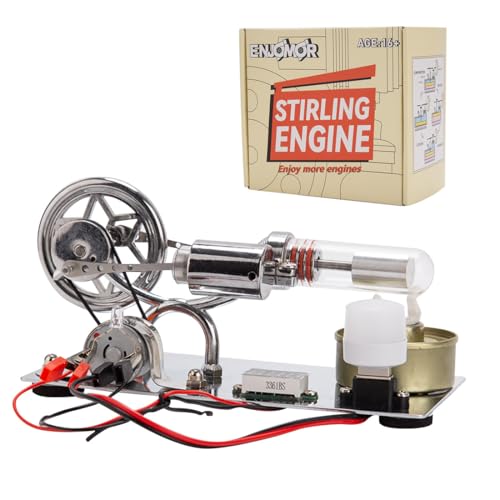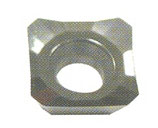Cedge said:
Okay... and just how many angels have we now determined can dance on the head of a pin? Sounds once again like old fashioned cat skinning and the fact that you can correctly do it more than one way.
Aha! A wise man has cut to the heart of the issue. You can indeed do it more than one way, that's my point and Steve's not taking a shot at you at all, Mcgyver. I'm not sure why this discussion has set you on edge, but rest assured, I do see your point and I'm also not taking any shots. Nor am I taking any offense, but you should relax a bit.
You can match lower rpms and slower feedrates and still get the correct chiploads or you can run higher rpms and faster feedrates. We simply differ on which makes sense to do. Lest ye think it's impossible to run the faster scenario I propose on my mill, here is a movie of a Tormach (very similar to my IH Mill) running the scenario under discussion of a 3/8" endmill, 3500-4500 rpm, and 30 IPM feedrate:
[link]https://www.tormach.com/MfgDatabase/MFG_20108_LR.wmv[/link]
I think that's pretty cool, and it sure shows the operation is within the machine constraints I'm dealing with. My IH mill is very similar to the Tormach.
But here is the real gist of why there are two ways, and why Mcgyver and I differ (I think):
The equations (of which Mcgyver thoughtfully provided one example) allow tradeoffs. For the cutter and material, we want a particular SFM. We also want a particular chipload. How big a chip is the cutter trying to peel off at a time? These operations have tradeoffs involving the rate at which we can remove material, the machine and tool's rigidity to resist cutting force without flexing or chattering, the spindle's horsepower (which is most of the cutting force) so it doesn't bog down, and the cutter life. We can balance the equations in various ways.
Mcgyver (I believe) advocates balancing the equations to lower spindle speeds. He'll slow down feedrate to keep the chipload right for a decent finish, and he doesn't see why this isn't the best way to go. For a given set of tradeoffs, it probably is, but they're not necessarily
my preferred tradeoffs. Mcgyver's method will emphasize:
- Stressing the machine less (potentially, but we'll see more on this shortly)
- Not having to mess with increasing the spindle's speed limitations (granted, this is hard, but its a hobby and I'm interested in building a spindle)
- Maximizing the tool life. He's really derating those tools running them well under the recommended numbers. That's cool, but small endmills just don't cost that much for me to care.
- Maybe not having to crank the feed so fast you'd go crazy (but remember, I'm running CNC as I said from the beginning).
At the lower rpm's, Mcgyver's primary mechanism to cut as fast will be more depth of cut. Personally, cranking depth of cut has been more of a machine capability issue than running the spindle too fast. We can also just live with slow metal removal rates by keeping DOC low.
That's all fine and well, but my goals are different. As I mention, I'm into CNC. This gives me a few more options. For example, I can rebalance the equations around high spindle speed, high feedrates (same chipload as Mcgyver), less depth of cut (which is how I lower cutting force enough not to stress the machine) and more passes (no problem, its CNC). My belief, and I think the Tormach video shows an example clearly, is that I can make parts faster that way. You may not care how fast the parts are being made, particularly if you're turning handwheels. My certainty is that what I'm proposing is completely within the parameters of how these things work and of what Mcgyver is saying. There is not just one way to skin the cat, and it is subjective in the sense that you have to choose your tradeoffs.
Ironically, the trade off I propose--going faster spindle less DOC--is precisely what the trend has been on modern CNC tools. They're lighter and less rigid than mills of old. But their spindles run way faster. They figured out that you can deal with a less rigid machine by lowering the DOC and making more passes with a faster spindle and high feedrates. It's a sound principle and well documented. It's ultimate conclusion (so far) is the High Speed Machining trend, but it works at much lower rpms too. To my way of thinking, that's applicable to "home scale" tools, which are lighter still, if only we can get spindle speeds up.
So yes, there really are more ways to skin the cats.
Cedge, I wouldn't get too carried away on the face mill. I've got a 3 inch. Turns out its similar to Swede's, just a little larger. Unfortuantely, mine is 225 and Swede's is a 205 series. His has even more positive rake and is even better suited to smaller machines. Check out Lovejoy on eBay. They sell samples as Sweede suggested. I'd go for a 2 or 3 inch. They're awesome for surfacing. Make a light cut with a flycutter as your final pass if you want a nicer finish and you're done.
Best,
BW
PS I won't even get started on the chips removing heat issue, but that's also well documented in the trade pubs if you want to go read up. I do think dry machining is relevant since most home shop folks run pretty dry. Hence I like to research that topic. Rather than further burden this discussion, I may do a writeup on this one with references on my cnccookbook web site.






















![DreamPlan Home Design and Landscaping Software Free for Windows [PC Download]](https://m.media-amazon.com/images/I/51kvZH2dVLL._SL500_.jpg)






































